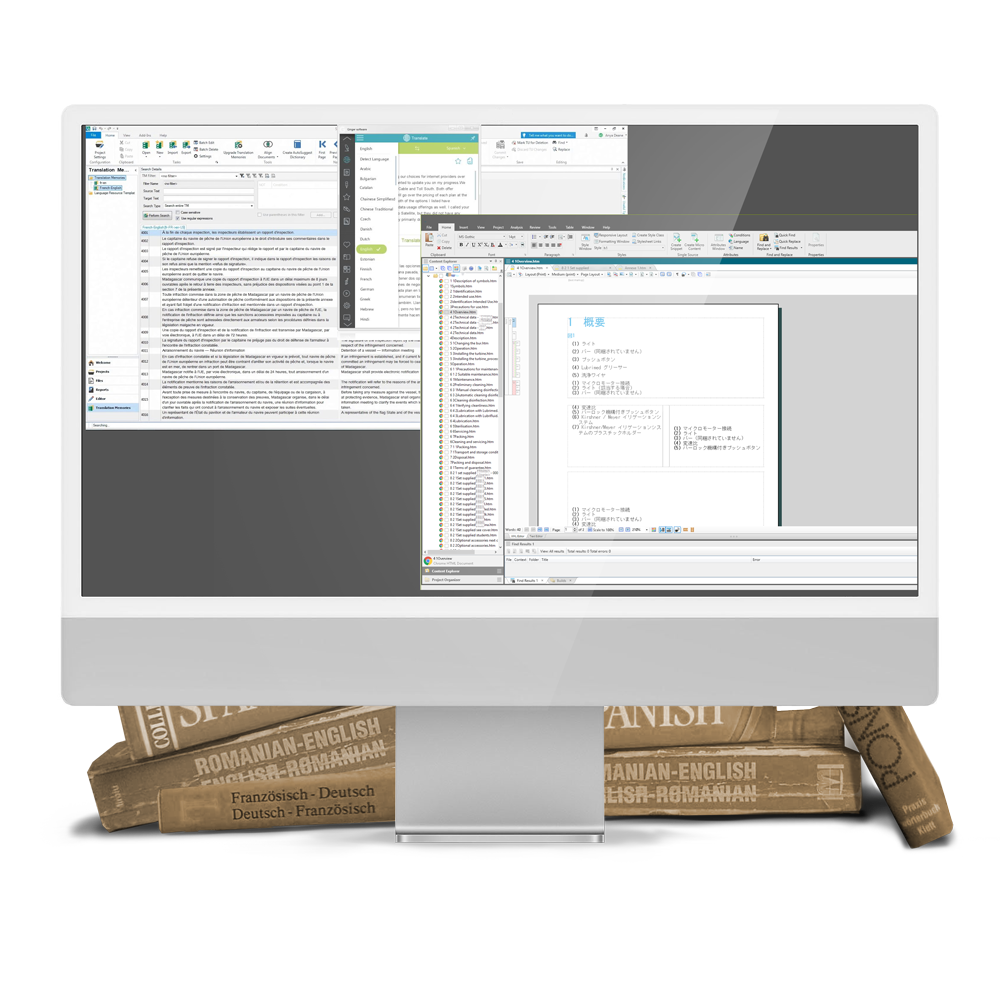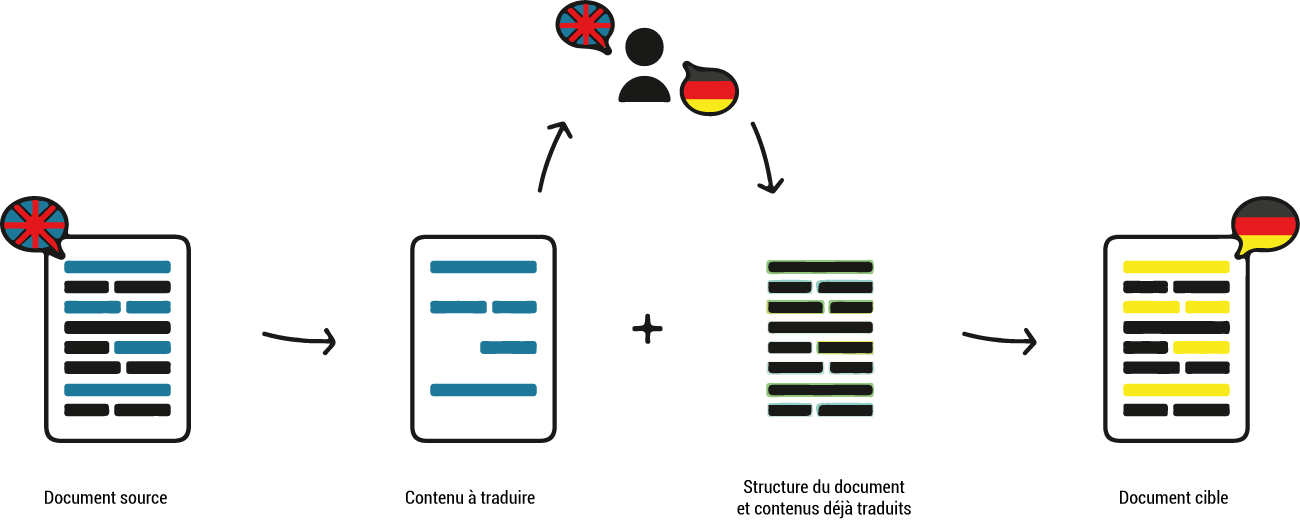Translations
The translation of technical content differs from the translation of a literary document such as a book in that it requires precision and no free interpretation.
Technical translation is performed by a specialist in the subject matter who is familiar with the appropriate terminologies.
It is imperative that the same content consulted in different languages be interpreted in the same way. It is inconceivable to let your imagination run wild when dealing with a technician who has to carry out specific operations in an established order.
Every company has a certain vocabulary. It will contribute to the culture of the company, the identification of components and of course reflects the image – sometimes subject to copyright – of the company.
Therefore, a glossary is provided to the translators in each language so that a uniform terminology is used for all contents and this in the long-term.
Tools
Professional translators rely on dedicated computer tools. This first allows for an initial analysis that will indicate which portions of the content to be translated have already been translated previously. Likewise, identical or similar content across documents is identified to be translated identically.
Formats
The tools used will separate the information from the formatting, the texts are translated, proofread, and then reformatted according to the target language.
Technical translators adapt to the format of the content to be translated. Indeed, some languages are more concise than others, so this last step is necessary to ensure a uniform and clear presentation whatever the language.
Memories
The more content translators process for a single entity, the more likely it is that content has already been translated. This computerized memory is put to good use and significantly reduces translation time and costs.
It is perfectly possible to feed this memory with already translated and validated documents. This preliminary work allows us to benefit from the company’s previous experience. Also, if another translation company has already been commissioned, these memories can be retrieved and integrated.
Fonts and non-Latin alphabet
Fonts must be adapted depending on whether one is translating for an audience using a specific alphabet – Chinese, Japanese, Cyrillic, … This adaptation is done either by using Unicode fonts with all the necessary signs, or by choosing fonts with an appropriate appearance.
The graphic charter of a company rarely allows the use of a Unicode font with an unsuitable visual.


